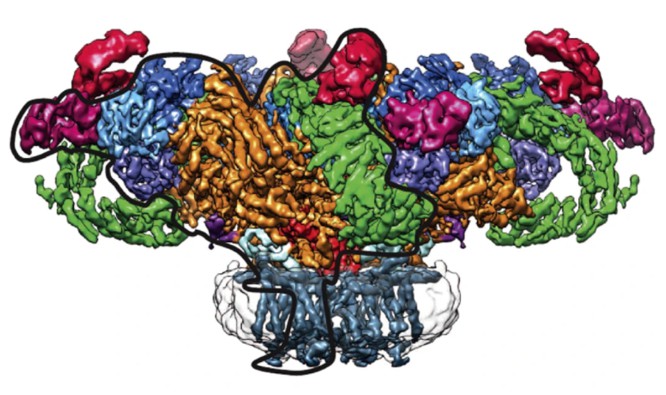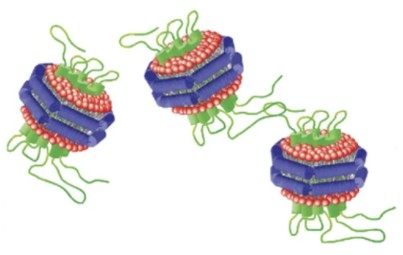Nanodisc for Protein Purification
A few detergent-sensitive membrane proteins are not suitable for detergent-containing buffers, making them unable to purify, easily degraded, or inactive. For this type of membrane protein, nanodisc technology can be applied for purification. The structure of nanodiscs is very similar to that of detergent micelles, consisting of 130-160 lipids arranged in a bilayer fashion, linked together by amphiphilic proteins called membrane scaffold proteins (MSPs). Its structured is similar to that of pie-shaped HDL in vivo, The hydrophobic residues of MSP protein are located on the inside of Helix and combine with the hydrophobic tail of phospholipid molecules through hydrophobic interaction. Compared with detergents, nanodiscs have better stability and solubility, allowing the arrangement of proteins closer to the native state and higher stability at the single-molecule level.
For many systems and projects, a ~10 nm diameter planar bilayer model system such as the nanodisc is ideal, providing space for one or more membrane proteins and allowing access to both sides for analysis of signaling events. In numerous studies, nanodiscs have proven to be an important tool for isolating membrane proteins and studying their structure and function in complexes with other proteins and lipids.
 Figure 1. The structure of the ryanodine receptor in a nanodisc, resolved to ∼6.1 Å through cryo-EM (Denisov, I.G.; Sligar, S.G. 2016)
Figure 1. The structure of the ryanodine receptor in a nanodisc, resolved to ∼6.1 Å through cryo-EM (Denisov, I.G.; Sligar, S.G. 2016)
Services
The nanodisc technology platform established by Profacgen has provided technical support for many projects to integrate stubborn membrane proteins into bilayers to maintain their structure and activity. We provide several different solutions according to customer needs:
- Nanodisc system combined with cell-free expression system
Add preassembled nanodiscs to the cell-free system. Preassembled nanodiscs are supplied as a mixture of integrated nascent membrane proteins. There is no need to add detergent during this process. Optionally, modifications such as biotinylation or isotope labeling can be included.
- Direct solubilization from membranes
Add detergent and membrane scaffold proteins to membranes expressing the protein of interest, and the membrane phospholipids, membrane protein, and membrane scaffold protein will assemble to form nanodisc complexes. Individual membrane protein-nanodisc complexes can then be purified by affinity chromatography.
- Reconstitution of detergent-solubilized protein
Add suitable detergents, membrane scaffold proteins, and phospholipids to purified membrane proteins. Nanodiscs containing membrane proteins assemble spontaneously and can be purified by affinity or size exclusion chromatography.

Our membrane protein research experts can test and optimize the molar stoichiometry of lipids to scaffold proteins and select the size and ratio of scaffold proteins to membrane proteins to favor the incorporation of predominantly monomeric or oligomeric target into nanodiscs.
Profacgen has accumulated lots of experience in membrane protein purification. Our professional technical team can provide customers with high-quality nanodisc technology and many related featured services. Our competitive prices and extensive expertise have earned us the trust of our collaborators. Contact us to find out how Profacgen could be of assistance.
References
- Denisov, I.G.; Sligar, S.G. Nanodiscs for structural and functional studies of membrane proteins. Nature Structural & Molecular Biology. 2016.
- Sligar, S.G.; Denisov, I.G. Nanodiscs: A toolkit for membrane protein science. Protein Sci. 2021.
Fill out this form and one of our experts will respond to you within one business day.